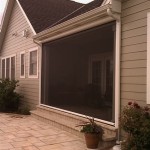Outdoor Patio Heaters: The Advantages of Natural Gas
Outdoor patio heaters extend the usability of outdoor spaces, providing warmth and comfort during cooler months. Among the various energy sources available, natural gas offers a compelling combination of efficiency, cost-effectiveness, and convenience, making it a popular choice for both residential and commercial applications. This article will explore the specific advantages of natural gas patio heaters, detailing their performance characteristics, operational aspects, and economic benefits.
The primary function of a patio heater is to radiate heat, creating a localized warm zone. This allows individuals to comfortably enjoy outdoor environments, such as patios, decks, and restaurant terraces, despite lower ambient temperatures. Different types of patio heaters utilize various fuel sources, including propane, electricity, and natural gas. Each fuel type presents its own set of advantages and disadvantages, influencing the selection process based on individual needs and priorities.
Natural gas patio heaters are typically connected directly to a building's existing natural gas line. This eliminates the need for refilling propane tanks or relying on electrical outlets, providing a continuous and reliable fuel supply. The connection to a fixed gas line also contributes to a cleaner aesthetic, as it avoids the clutter associated with portable propane tanks and electrical cords.
Consistent Heat Output and Performance
One of the key advantages of natural gas patio heaters is their consistent heat output. Natural gas provides a stable and predictable energy source, ensuring that the heater performs reliably regardless of external factors such as temperature fluctuations or fuel availability. This consistent performance is particularly important in commercial settings, where maintaining a comfortable environment for customers is crucial.
The heat output of natural gas patio heaters is generally measured in British thermal units (BTUs). BTU rating indicates the amount of heat the heater can generate per hour. Higher BTU ratings are suitable for larger spaces or colder climates, while lower BTU ratings may be sufficient for smaller patios or milder weather. When selecting a natural gas patio heater, it is important to consider the size of the area to be heated and the typical temperature range to ensure adequate warming capacity.
Natural gas heaters typically exhibit a rapid heating time, quickly reaching their optimal operating temperature. This allows users to enjoy the warmth of the heater shortly after turning it on. The efficiency of natural gas combustion also contributes to faster heating times compared to some alternative fuel sources.
The designs of natural gas patio heaters vary widely, encompassing styles such as mushroom heaters, pyramid heaters, and wall-mounted units. Mushroom heaters are characterized by their distinctive mushroom-shaped reflector, which directs heat downward in a circular pattern. Pyramid heaters feature a tall, slender design with a visible flame encased in a glass tube, offering both heat and aesthetic appeal. Wall-mounted heaters provide a space-saving solution, ideal for smaller patios or balconies where floor space is limited.
Regardless of the design, most natural gas patio heaters incorporate safety features such as automatic shut-off valves, which activate in the event of a tip-over or malfunction. These safety mechanisms help prevent accidents and ensure safe operation of the heater.
Economic Benefits and Long-Term Cost Savings
While the initial investment in a natural gas patio heater may be higher compared to some propane or electric models, the long-term operating costs are often significantly lower. Natural gas is generally less expensive than propane or electricity on a per-BTU basis, resulting in substantial cost savings over the lifespan of the heater.
The direct connection to a natural gas line eliminates the inconvenience and expense of refilling propane tanks. Propane tank refills can be time-consuming and may require trips to a designated refueling station. Furthermore, the cost of propane can fluctuate depending on market conditions, making it difficult to predict long-term fuel expenses. Natural gas, on the other hand, offers a more stable and predictable fuel cost, allowing for better budgeting and financial planning.
The durability and longevity of natural gas patio heaters also contribute to their overall economic value. These heaters are typically constructed from high-quality materials such as stainless steel, which resists corrosion and withstands harsh weather conditions. With proper maintenance, a natural gas patio heater can provide years of reliable service, minimizing the need for replacements and reducing long-term expenses.
The economic benefits of natural gas patio heaters are particularly apparent in commercial settings, such as restaurants and cafes. By extending the outdoor dining season, these heaters can significantly increase revenue and profitability. The ability to provide a comfortable outdoor environment attracts customers and encourages them to stay longer, leading to higher sales and improved customer satisfaction.
Furthermore, the use of natural gas patio heaters can enhance the aesthetic appeal of outdoor spaces, creating a more inviting and welcoming atmosphere. This can attract more customers and differentiate a business from its competitors. The investment in natural gas patio heaters can therefore be seen as a strategic investment that yields both economic and aesthetic benefits.
Environmental Considerations and Efficiency
While natural gas is a fossil fuel, it is generally considered a cleaner-burning fuel compared to propane and other alternatives. Natural gas combustion produces fewer greenhouse gas emissions and particulate matter, contributing to improved air quality and reduced environmental impact. This is an important consideration for environmentally conscious individuals and businesses.
The efficiency of natural gas patio heaters plays a significant role in minimizing their environmental footprint. High-efficiency models are designed to maximize heat output while minimizing fuel consumption, reducing energy waste and lowering emissions. When selecting a natural gas patio heater, it is important to look for models with high efficiency ratings to ensure optimal performance and minimal environmental impact.
Proper maintenance of natural gas patio heaters is also essential for maximizing their efficiency and minimizing emissions. Regular cleaning and inspection of the heater can help prevent malfunctions and ensure that it operates at peak performance. This includes checking for gas leaks, cleaning the burner and reflector, and ensuring that the heater is properly ventilated.
The use of natural gas as a fuel source can also contribute to energy independence. Natural gas is a domestically abundant resource in many countries, reducing reliance on imported energy and promoting energy security. This is a strategic advantage that can help stabilize energy prices and reduce vulnerability to geopolitical disruptions.
Regulations regarding emissions and energy efficiency are constantly evolving. Manufacturers are continuously developing new technologies to further improve the environmental performance of natural gas patio heaters. Consumers should stay informed about the latest advancements and choose models that meet or exceed current regulatory standards.
In summary, natural gas patio heaters offer a compelling combination of consistent heat output, economic benefits, and environmental advantages. Their reliable performance, long-term cost savings, and cleaner burning characteristics make them a popular choice for extending the usability of outdoor spaces. By carefully considering the size of the area to be heated, the typical temperature range, and the efficiency of the heater, individuals and businesses can select a natural gas patio heater that meets their specific needs and contributes to a comfortable and enjoyable outdoor experience.
The installation of a natural gas patio heater typically requires professional assistance to ensure proper connection to the gas line and adherence to safety regulations. A qualified gas technician can assess the existing gas infrastructure, determine the appropriate heater size and location, and perform the installation safely and efficiently. It is important to obtain the necessary permits and approvals from local authorities before installing a natural gas patio heater.
The ongoing maintenance of a natural gas patio heater is relatively straightforward. Regular cleaning and inspection are essential for ensuring optimal performance and extending the lifespan of the heater. This includes checking for gas leaks, cleaning the burner and reflector, and ensuring that the heater is properly ventilated. It is also recommended to have the heater professionally inspected and serviced periodically to identify and address any potential issues before they escalate into more serious problems.

Natural Gas Patio Heaters Sylvane

Natural Gas Patio Heater Information Woodlanddirect Com

Installing Gas Patio Heaters American Lamp Works

Natural Gas Infrared Heaters Antique Broe Patio Heater

Schwank Mo 2150 Ng Natural Gas Black Outdoor Patio Heater 50 000 Btu

The 2 Best Outdoor Patio Heaters Of 2024 Reviews By Wirecutter

The 2 Best Outdoor Patio Heaters Of 2024 Reviews By Wirecutter

Calcana Infrared Patio Heaters

Calcana Patio Heater Ph75ho High Output

Costway 11000 Btu Portable Natural Gas Patio Heater Propane Np10036 The Home








